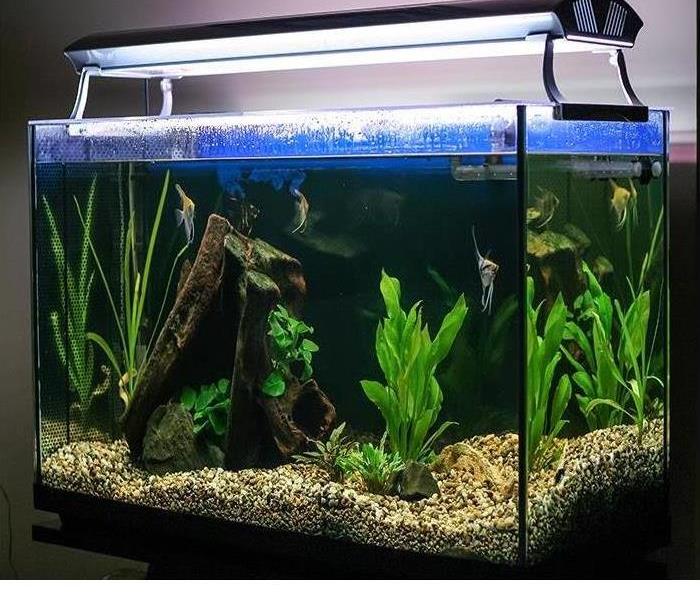Aquarium Can Cause Flood Damage to Your Englewood Office
5/3/2020 (Permalink)
Flood Damage Caused By Your Waiting Room's Aquarium
An aquarium tank, when full, experiences intense pressure from the inside. Fish tanks are constructed of glass pieces and silicone adhesive inserted inside a metal or wooden frame. They are well-known for developing tiny leaks that are hard to locate when full.
Not all flood damage in Englewood originates from the outside world. Placing an aquarium on display for your clients can relax them immeasurably. However, ensuring that your tank is never leaking can be hard to do. Draining a tank, finding temporary homes for all of the occupants, and then drying the tank out to remove and reapply silicone can be an especially tiresome task, which is why many times a tank is left as it is until it is too late and the tank's water gushes out.
Fish tanks are as foul-smelling as they are beautiful, even when they are maintained correctly. When the water spills out of a fish tank, what was once a beautiful centerpiece in your clean waiting area quickly becomes a disgusting and flooded mess – not something you want clients to see, or to smell. A good water repair company knows that your professional image is directly affected by the experience your clients have, beginning from the moment they walk into the waiting room until they conclude their session with you. We want to make it pleasant for everyone again, no matter the source of your flood damage.
Cleaning up the Water
The procedure for cleaning up and restoring your practice after flood damage happens reflects not only the damaged area but also the type of water involved. Water from a fish tank contains uneaten food and other organic components, and any chemicals used to treat the water. Algae is also a common element in fish tanks. While the water may look clean, we would classify this flood as black water because of the nature of the water. Even with water extraction, subsequent cleaning, and anti-microbial treatments, it is likely that more is needed.
Bad Odors from Flooding
When flood damage includes bad odors that are left behind, as it often does, we include deodorization techniques in our services. In many buildings, the carpet acts as a built-in filter for collecting particles that were airborne. Flooding greatly hinders this filtering. After a flood, instead of holding onto particles, the carpet now releases the newly deposited particles into the air. Our Carpet Repair and Reinstallation Technician (RRT) has been certified by the IICRC in cleaning techniques. After the carpet is clean, an assessment of which type machinery is required to best address the problem of remaining odors.
Fogging is a very effective way to rid an area of odors. Because of the water inherent in a disaster such as flooding, dry fogging is often preferred over other methods. Dry-fogging is also called thermal fogging. Fogging allows the mist used to penetrate every nook and cranny. The deodorizing particles in the mist then bind with those particles that cleaning could not remove. Before we consider our work complete, your waiting room can be “Like it never even happened.” No more water, and no lingering fish odor to irritate your clients or your staff.
When your practice has flood damage, there is no need to cancel your clients' appointments. Instead, call us, SERVPRO of Teaneck / Englewood to make your appointment. We can be reached at all hours of the day or night by calling us at (201) 266-0482. We can begin work within the hour, ensuring that your clients will not miss their next session with you.






 24/7 Emergency Service
24/7 Emergency Service